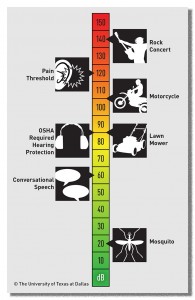It’s true; hearing aids are not a low-cost investment. But when you consider what hearing loss has
or can cost you, the investment pales in comparison. In this article I will cover the four main
areas of life that untreated hearing loss can dramatically impact.
Typically, the people you live with are also affected by
untreated hearing loss. So it’s no surprise that patients and their spouses
often report that even a mild hearing loss can put strain on a marriage. When everyday conversation becomes a little
difficult, the television becomes too loud and one person is asking for
repetition, blaming the misunderstanding on the other’s mumbling, even the most
loving couples will get frustrated. The
person with the loss doesn’t recognize the gradual changes in hearing and their
spouse has had to alter their normal conversation style to compensate for the
other’s hearing loss. In most cases,
today’s hearing technology and implementing some basic communication strategies
will remedy daily life frustrations for both of you.
If family members are noticing that you’re having trouble
hearing, it’s a good bet that your friends are too. You may notice that you are straining to hear
conversations on the golf course or playing bridge. You may “fake it” by nodding when you really
didn’t understand what was being said, or laugh at the punch line of a joke
that you didn’t hear. The authenticity
of the relationship starts to shift. A
change in hearing seems to be a taboo subject for many people. If a friend does mention something about your
hearing, consider it’s true. If someone has the capacity to show this concern,
they are a caring friend. If
misunderstandings from hearing deficits become the joke of the day, handle it
with grace… you may laugh as well, but the true message is, your hearing is not
keeping up with the rest of your life; it’s time to measure your hearing
abilities.
When you have a reduction in hearing, more effort is needed
to follow conversations in background noise and at some point the amount of
effort to understand becomes too taxing.
Without even knowing it, the change in your hearing will cause you to
change your lifestyle as you start reconsidering dinner invitations, parties
and other outings. Going out to dinner,
enjoying a party, sporting event, movie or interest group doesn’t seem like as
much fun when you can’t follow conversation.
Often, I hear people say they don’t enjoy certain groups anymore, only
to discover that it really is about their communication breakdown not a lack of
interest in the group itself. Untreated
hearing loss leads to isolation, negativity, and depression. Ultimately, what
makes life worth living are the relationships we have.
We all know that your brain is what works your body
parts. So what works your brain? One thing that stimulates your brain is the
sound that is received through your ears.
If your hearing decreases, so does the stimulation to your brain. Hearing typically decreases at such a gradual
rate that you barely notice it, if you notice it at all. The longer you wait to treat hearing loss,
the more difficult it is for your brain to use the information it
receives. Recent studies show a
correlation in cognitive decline and untreated hearing loss. Most people get
their eyes and general health monitored annually. When was the last time you had your hearing
checked? Get it done today…there is no
substitute for healthy hearing.

At Gilliom Audiology we offer complimentary hearing
checks. We encourage you to bring a
loved one with you; it’s important that they are part of your diagnosis and
treatment process.
So what are hearing aids really worth? Your relationships? Your health?
Your lifestyle? It’s your decision.

 As we immerse ourselves in summer fun and activities it's important to remember the things that keep us healthy and enjoy all of our summers to come. We covered this topic on our facebook page (
As we immerse ourselves in summer fun and activities it's important to remember the things that keep us healthy and enjoy all of our summers to come. We covered this topic on our facebook page (

